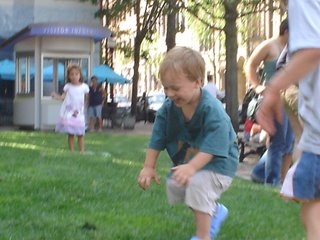How to create learning junkies
 Remember how it felt when it all clicked? When, after hours, days, or even years of intensive study, you finally understood something complicated? Perhaps you would describe it as a high. According to a recent study you would be right. This moment of insight, this click, results in a shot of “natural opium-like substances”. It appears that those folks who took pleasure in learning were on the money. As far a junkies go being a learning junkie doesn’t sound so bad. Irving Biederman, professor of neuroscience at USC, also finds that the fix is associated with new, novel material. “Without thinking about it, we pick out experiences that are richly interpretable but novel.” This all reminds me of a post by Kathy Sierra at Creating Passionate Users where she outlines the Typology of Cognitive Pleasures. Briefly:
It’s not hard to see how these “Cognitive Pleasures” may play on the release of opiates in the brain thereby giving the learning junky their fix. Perhaps this Typology of Cognitive Pleasures provides a blueprint for aligning instruction with the new mind. |



